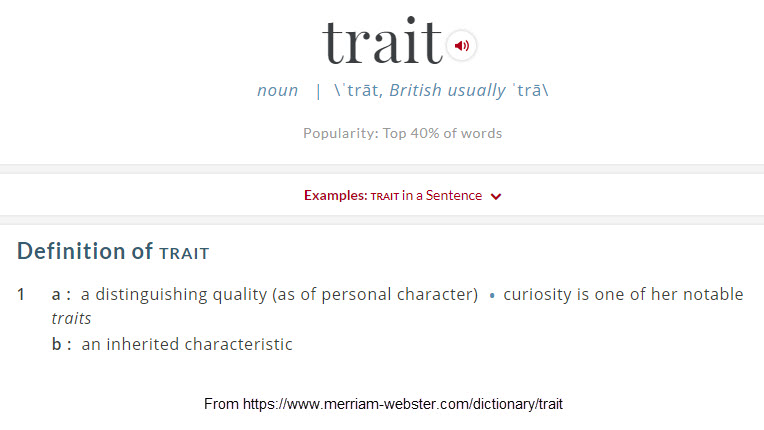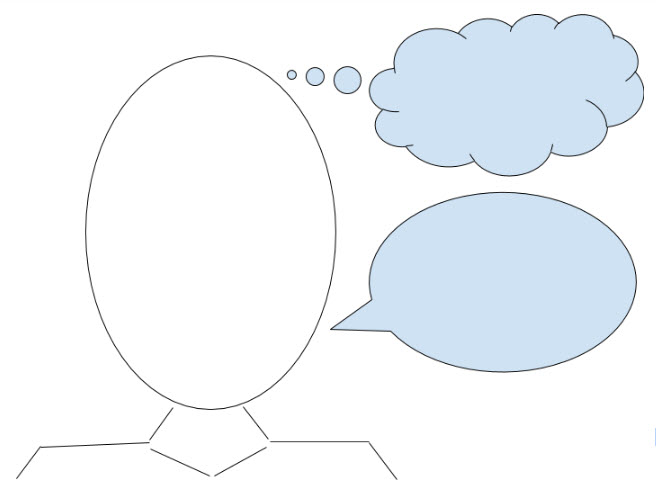Robotic Characters
Students will transform a robot into a character from a book to illustrate their understanding of character traits.
Setup
- Copy student handouts.
- Choose a picture book or short excerpt from a novel to read to the class to practice describing character traits and writing a program for the robot.
- Determine the novels or books the students will choose a character from. Students may use a novel group book, independent reading book, picture book, or any other text of your choice.
Attachments:
Introduction
- Ask the class, "What is a trait?" Discuss as a class.
- Display the definition of trait (attached below). Discuss the definition of trait and ask the students to describe a character trait for themselves or another classmate.
- Tell the class that character traits can be determined through analyzing a person or character's actions, thoughts, and words. In computer science this is called decomposition. Computer scientists use decomposition to break down a complex task into smaller, more manageable components. While reading, students decompose a character to learn more about them by analyzing their actions, thoughts, behaviors, and interactions with other characters. A brief chart of character traits is on the first page of the student handouts for reference.

Guided Instruction
- Read aloud a short picture book or excerpt from a novel.
- Facilitate a class discussion about character traits of a particular character in the book. Students will record their thinking in the graphic organizer on page 2 of the student handouts. Character traits are about recognizing patterns within a character's behaviors, words, and interactions. What character traits describe the character? What thoughts, actions, or words support those character traits?
- Abstraction is the process of determining what is essential for sharing our message and what we can leave out. In this discussion, students choose one scene to illustrate the character’s most important trait. What components of the scene are essential to include in the robotic reenactment? What components can be left out? For example, the students may not need to include information about the setting or other characters to illustrate that their character is compassionate.
- Display the basic GoPiGo block and loop block descriptions so that students know what movements are possible before writing their pseudocode.
- Students will then write pseudocode on paper to create a program to illustrate a scene from the book that clearly shows one or more of the character's traits. Note: students’ pseudocode does not need to look like the Bloxter blocks.
- Select students to share their scene and what they "programmed" the robot to do to illustrate the character trait.

Collaborative Learning
- Students will then complete the same process for a character in a book that they have read or are currently reading. However, this time they will actually program a GoPiGo robot to act out the scene. This can be student choice or teacher choice.
- First, students will practice recognizing patterns in the behavior of their chosen character in order to describe and explain character traits for one of the characters in their book.
- Then, students will practice abstracting out the best scene for showcasing that character trait.
- Students briefly draft their program using pseudocode just like they practiced in the Guided Instruction section.
- They will then program their robot to act out the scene by programming it in Bloxter. When students are connected to a robot, they’ll have access to Bloxter tutorials if they need the support. This is an example of writing algorithmic solutions in computational thinking.
- In small groups the students will share their character traits and evidence as well as run their programs to show a scene from their book using the GoPiGo.
Closure
Facilitate a class discussion about the successes and challenges of using programming to describe character traits.
- What computational thinking strategies did you utilize while creating your character (ex. Decomposition, pattern recognition, algorithmic solutions, and abstraction)? How so? What did you need to debug? How would you iterate your program to add another dimension to your character?
Last modified: Thursday, 31 December 2020, 9:53 PM